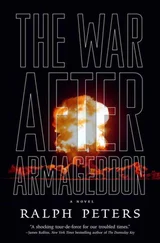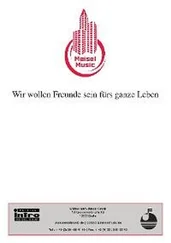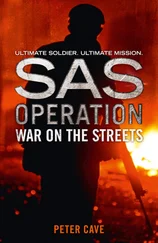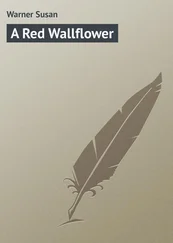“Not for long. And we can't run the bilge pumps because the noise they make will give our position away.”
“No sign of the K-363?” Abakov said.
“Nothing. For all I know we may be sitting right under her. You can bet they’re looking for us.”
“And the flooding?” Abakov insisted.
“The escape trunk in the sail and the tunnel above it that opens onto the bridge and cockpit may have been damaged.”
“Kapitan, the scopes arc jammed,” the starpom reported. “And there is a bad leak coming in from around the attack scope’s packing gland.”
Scott pictured the packing blowing out and the CCP flooding fast.
“Now we’re blind too,” Alex said.
“But not deaf,” Scott said. “Sonar’s still in good shape.”
The SC1 squawked with reports of minor damage from other compartments: tripped circuit breakers, leaking valves, smashed china in the crew’s mess.
“Nothing we can’t live with,” Scott said. “I’m going to inspect the escape trunk and tunnel. I want to see the damage for myself.”
“Jake, don’t, it’s too risky.” Alex said.
“What the hell isn’t?”
* * *
Scott shrugged into an orange immersion suit held open by Abakov.
“Can you wiggle through the upper hatch in that thing?” Abakov said, zipping Scott inside the bulky suit.
“I’ll make it. Keep the lower hatch dogged until I'm ready to come back in—just in case.”
“Just in case what?” Alex asked.
“Just in case the trunk floods.”
“Jake, what if the K-363 attacks while you’re up there?” she asked.
“They’re probably as shook up as we are and need time to square away. Anyway, this won't take long.”
A michman handed Scott a portable light. Scott put a foot on a rung of the ladder under the skirt. “Starpom.”
“Kapitan?”
“If something happens to me up there, you're in command.”
“Aye, Kapitan. Don't worry, I have three men on sonar. If the K-363 makes a move, we’ll hear her.” Scott started up the ladder.
“Jake…”
He looked down at Alex’s and Abakov’s upturned faces.
“Be careful,” she said, even though she knew it sounded lame.
“Stand aside,” Scott said.
He spun the handwheel on the underside of the hatch to retract the dogs, then put his back against the wheel and carefully cracked the hatch off its seat, allowing air pressure inside the CCP to vent into the escape trunk. After decompression, he threw the hatch cover open, climbed into the trunk, and redogged the cover.
Inside the trunk a feeble caged lightbulb gave just enough illumination for Scott to get his bearings. He switched on the portable light and shined its beam over the silver-gray walls of the trunk, and, overhead on the upper hatch and its release mechanism. He saw water leaking past the trunk’s upper hatch seal and suspected that the hatch at the top of the tunnel leading to the bridge had also been damaged. If so, the tunnel itself might have been damaged. A catastrophic failure of the upper hatch or collapse of the tunnel would flood the escape trunk and the CCP. Normally the tunnel was dry to permit access topside. But if the K-480 was ever sunk in water shallow enough to permit the crew to escape, the upper hatch, equipped with explosive bolts, would be blown open to flood the tunnel and permit egress from the escape trunk where Scott stood.
Scott heard a heavy flow of water and saw it swirling around his orange boots and out a wide crack in the floor of the trunk into the CCP below. His inspection revealed that the crack in the floor also ran up the wall of the trunk. He followed it around the circular chamber, where it petered out in a web of cracks at one of a dozen vertical rows of one-inch-diameter bolts evenly spaced around the trunk’s circumference. The bolts helped anchor the chamber to heavy steel support frames inside the free- flooding sail.
He winced when he saw that the collision with the K-363 had not only wrenched the escape trunk out of alignment but had also pulled several of the massive bolt heads through the hardened steel wall of the trunk as if it were soft cheese. Seawater poured into the trunk through the enlarged, puckered bolt holes while it also poured in from above through the sprung hatch.
Scott concluded that the overhead tunnel wasn’t flooded, a sign that the damage wasn’t as great as he had feared. Otherwise water would be shooting out from around the hatch under pressure so great, it would have sliced through his immersion suit. He spun the handwheel on the upper hatch to retract the dogs and, bent double on the ladder below it, tested the hatch against a possible pressure head of seawater. When it gave easily, he cracked it open.
A torrent of icy water crashed over Scott's shoulders. He felt the ocean’s cold knife through the immersion suit and knew that without it he’d be immobilized from the cold. The flood ebbed and he swung the heavy cover up and away until its lip caught the safety catch made to hold it open.
Overhead he saw a long tunnel with welded-on rungs and handholds receding into blackness. The lantern beam revealed a fan of water shooting into the tunnel under high pressure just below the sealed hatch at the tunnel’s upper end. Water crashing against the tunnel’s wall flowed down its length and poured from the open hatch below, into the escape trunk, and out through its cracked floor into the CCP.
Despite the texture molded into the heavy rubber gloves and boots attached to the immersion suit, Scott found it hard to get a grip on the steel rungs. The climb was slow and difficult. Water shooting into the tunnel drenched Scott and took his breath away. Halfway up he slipped and almost fell but held on with both hands to a slippery rung above his head.
He reached the underside of the upper hatch, played light over its rough steel, and saw that the hatch itself wasn’t damaged but that the tunnel had been caved in and fractured, which allowed water into the tunnel. Scott didn’t doubt that the tunnel would probably collapse under heavy sea pressure and flood the escape trunk and CCP.
He looked around for the emergency SC1 speaker he knew was mounted in the lower end of the tunnel. He found the large flat speaker button painted white, which he hit with the flat of his gloved hand.
“CCP, Scott!" he bellowed.
“CCP, aye. We hear you, Kapitan. Are you all right?’ It was the starpom.
“High and dry,” Scott said.
But he wasn’t. Scott slipped and fell down three rungs before he got a firm grip. Slag from a rough weld on one of the rungs tore through the immersion suit and his flesh.
“Kapitan…?”
“I’m okay,” Scott said. “We’ve got damage to the trunk and upper tunnel. Can’t go deep or we’ll flood.” He filled them in and then started back down.
Scott dropped the last fifteen feet down the tunnel and scrambled into the trunk. He unclipped the upper hatch cover, dogged it, then opened the lower hatch, unleashing a flood of freezing water onto Abakov and the starpom waiting for him at the base of the ladder. Scott dropped to the deck and collapsed in an orange-suited heap.
He was greeted by the starpom’s warning: “Kapitan, sonar contact—”
“The K-363?” Scott said.
“I hear a circulating pump—not a main, something else.”
Abakov helped Scott out of the immersion suit. He was soaked. And bloody.
“Scott, you're injured,” Alex insisted.
“Later.” Scott squelched across the CCP to the sonar repeater.
“Close aboard, Kapitan,” said the starpom.
“Bearing?”
“Weak signature. Bearing two-four-zero…two-three-nine…two-three-eight…”
“Dropping abaft the port beam,” Scott said.
“Jake, you need some dry clothes,” Alex said.
Читать дальше












